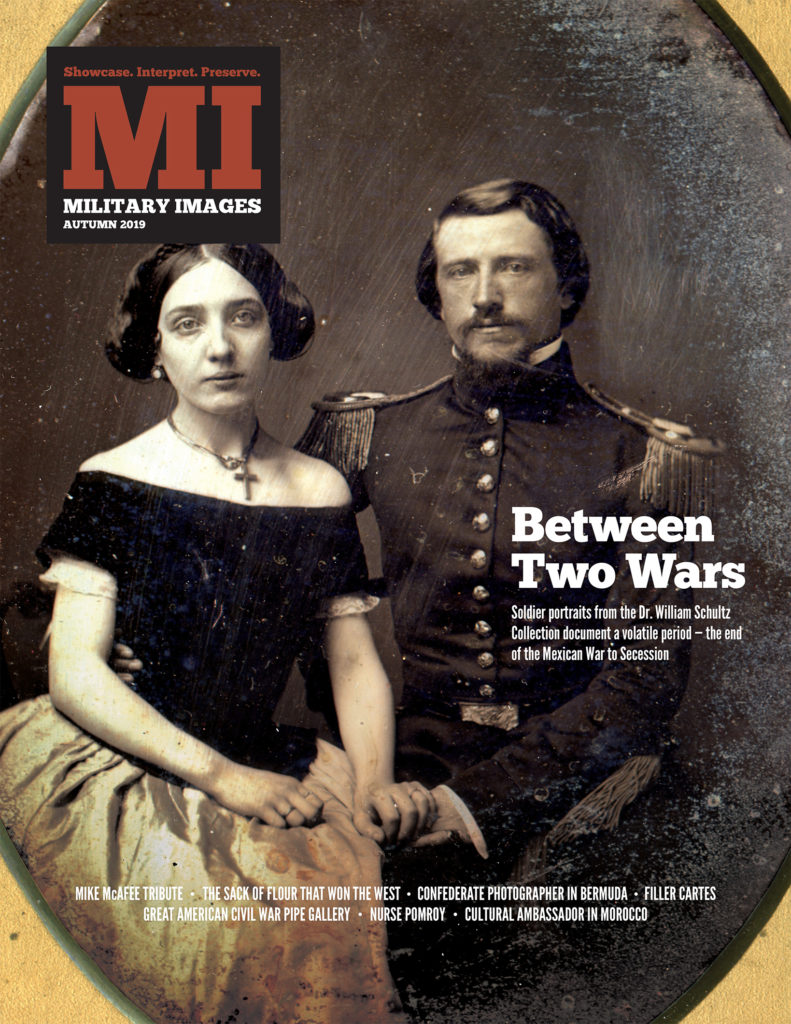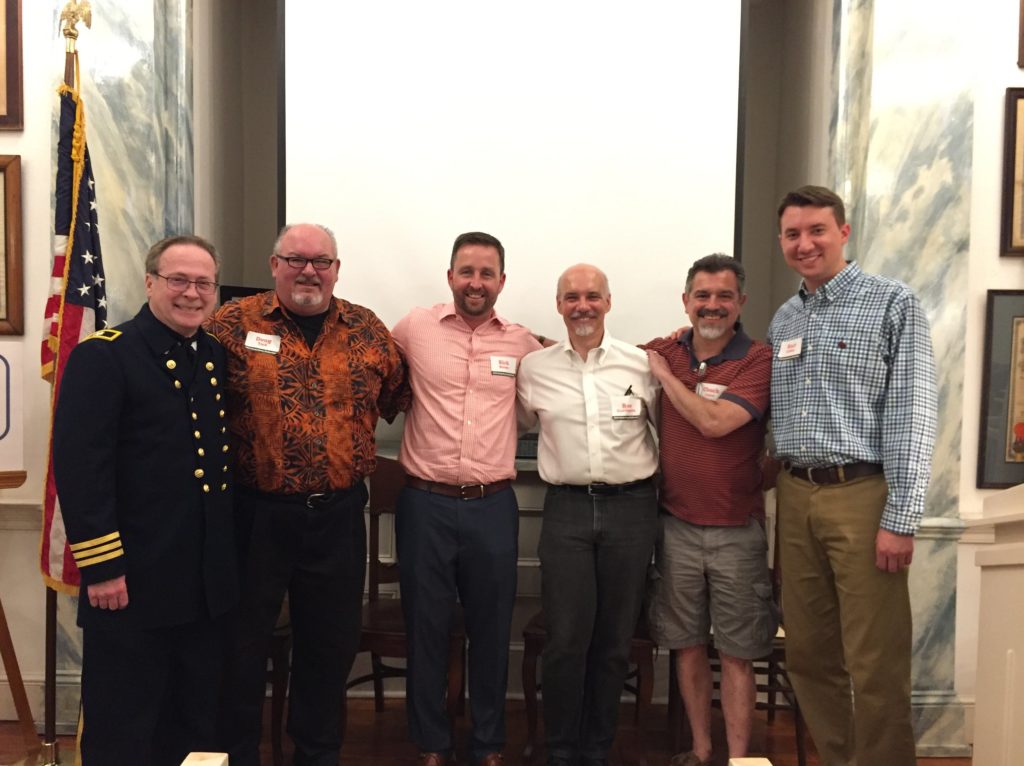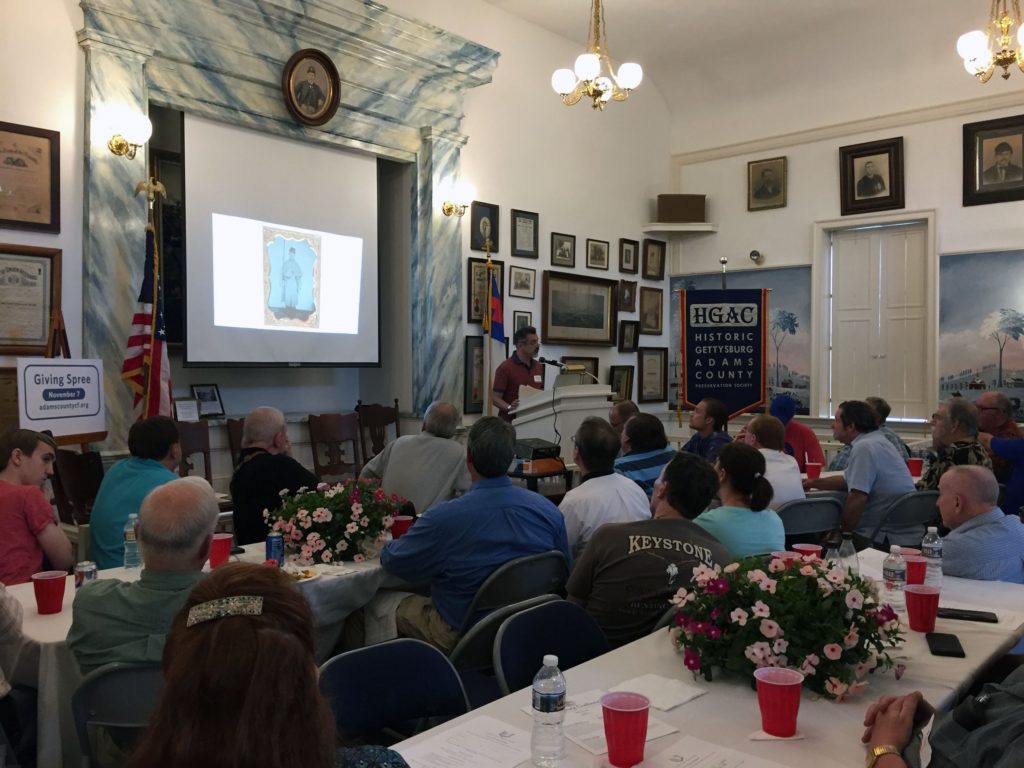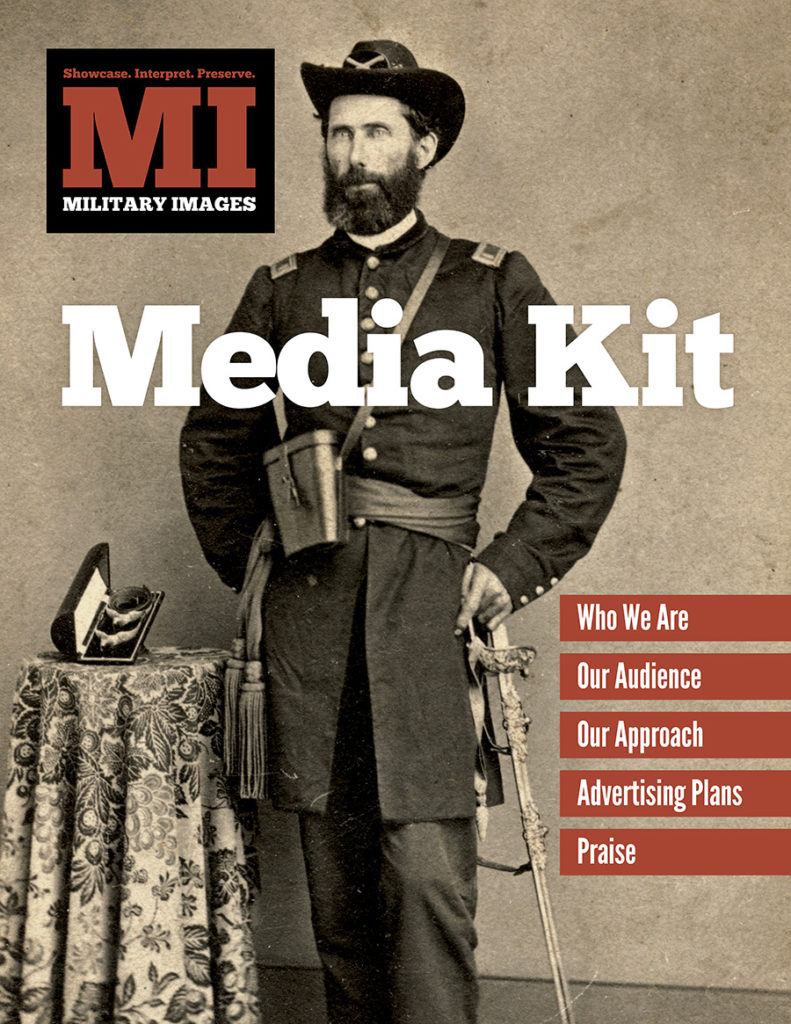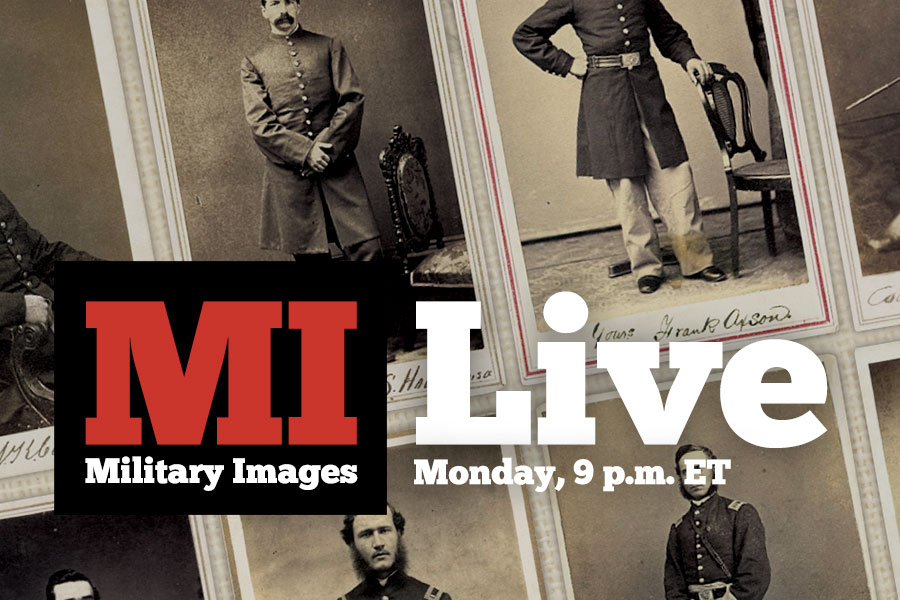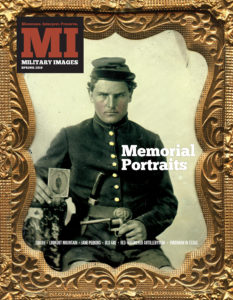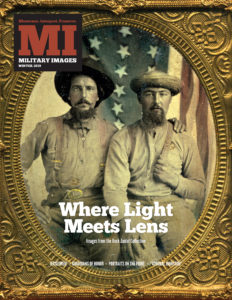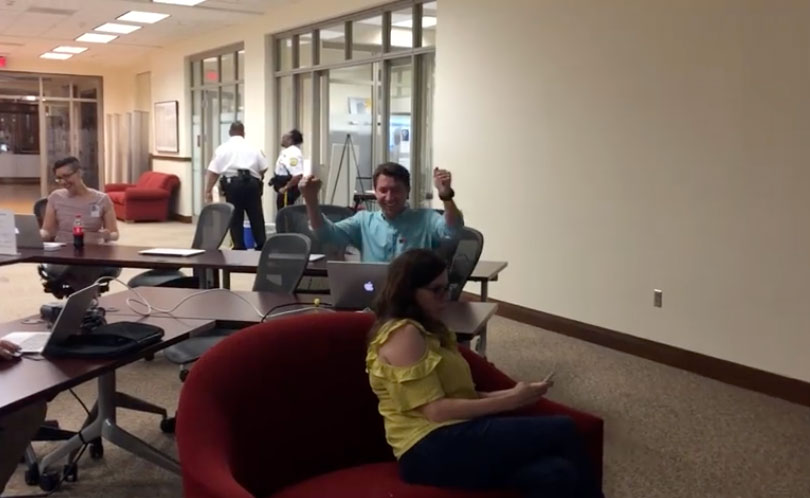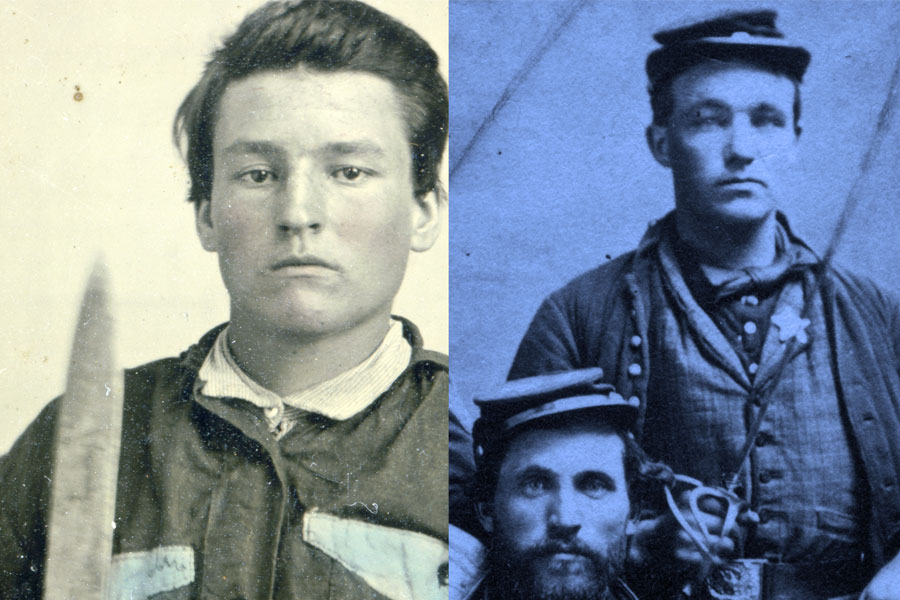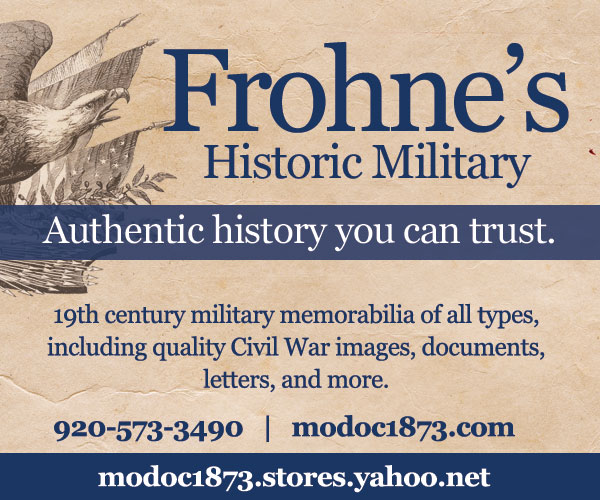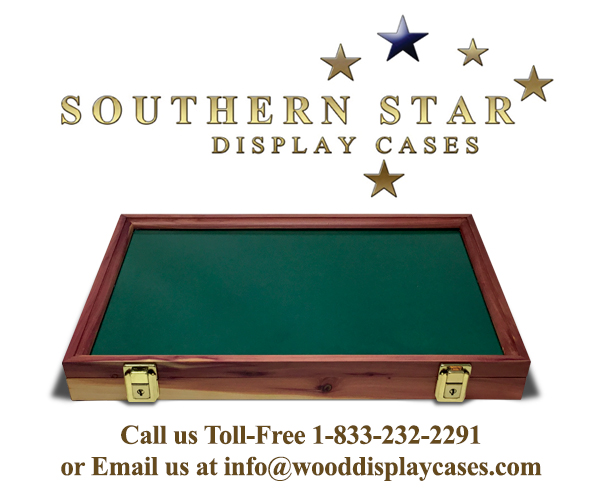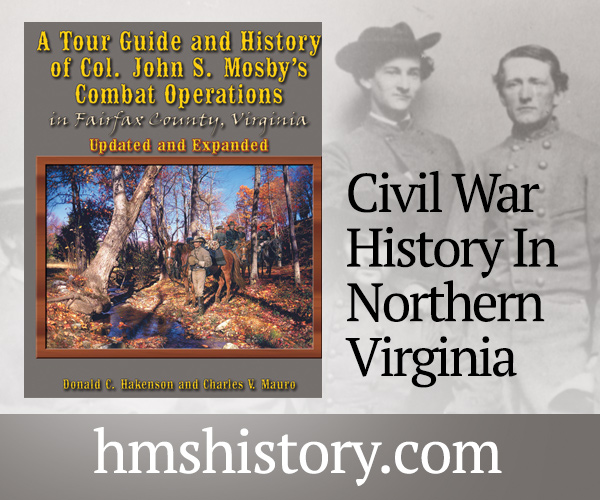The complete issue
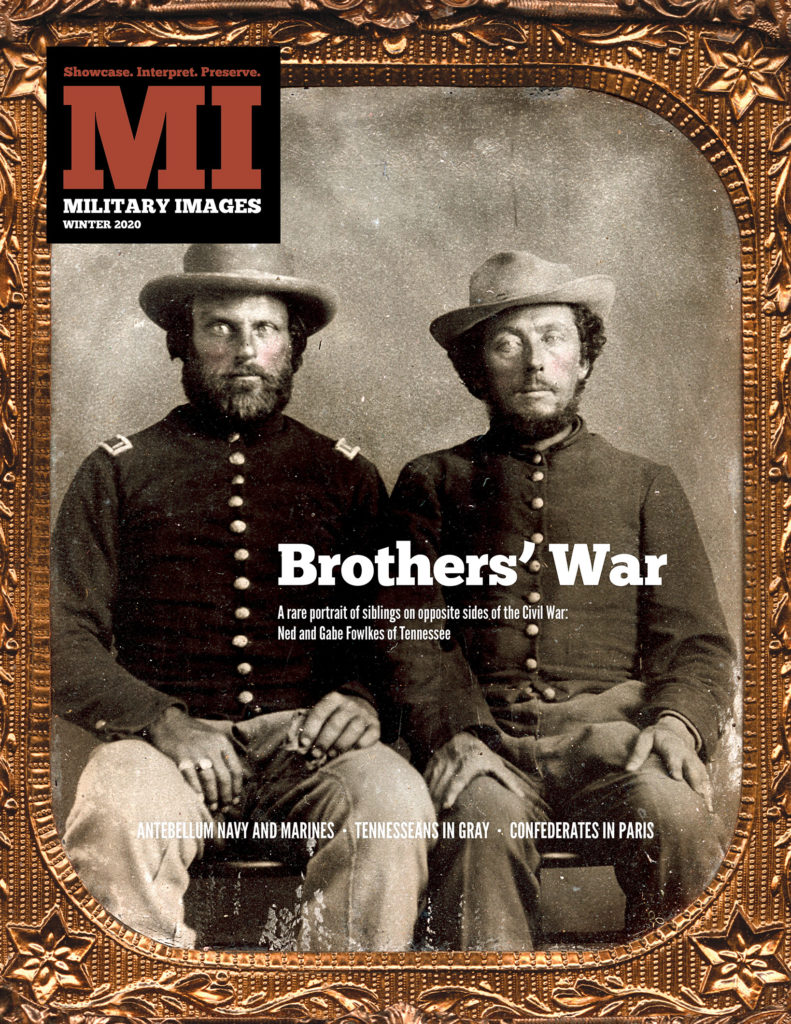
Vol. XXXVIII, No. 1
(80 pages)
Print edition: Visit our store to check availability
Digital edition: Visit JSTOR.org to purchase
Subscribe to MI ($24.95)
Explore the MI Archives: Browse | Advanced search | Tutorial
Inside
Cover image
A sixth-plate tintype from the Gary Waddey Collection pictures Ned and Gabe Fowlkes of Tennessee. Taken about October 1865, Ned served in the Union army and Gabe in the Confederate military.
Table of Contents (p. 1)
Editor’s Desk (p. 2)
The editor reflects on the generosity of subscribers who contributed funds to purchase subscriptions for students at Lake Hill Elementary School in Union City, Tenn., and thanks those who contributed to the “Tennesseans in Gray” gallery.
Mail Call (pp. 3-4)
Feedback includes notes from new and returning subscribes, late war Zouave uniforms and Henry Deeks’ business card.
Military Anthropologist (p. 4)
A chart based on statistics from the U.S. Sanitary Commission shows that camp condition grades worsened during the first half of the Civil War.
Passing in Review (p. 6)
An interview with Diane Waggoner of the National Gallery of Art in Washington, D.C., curator of “The Eye of the Sun,” an exhibit celebrating the 180th birthday of photography.
Photo Sleuth by Kurt Luther (pp. 8-10)
In “Why Photo Sleuths Do—and Don’t—Share With the Community,” Kurt shares information based on his interviews with collectors.
Antebellum Warriors (p. 12)
A half-plate daguerreotype from the Rich Jahn Collection is a portrait of an officer dressed in the 1851 regulation uniform. He holds a Model 1850 foot officer’s sword.
The Honored Few (p. 14)
Edward Hill, a captain in the 16th Michigan Infantry, earned the Medal of Honor for leading a charge against Confederate forces during the Battle of Cold Harbor on June 1, 1864. Hill survived a serious gunshot wound in his hip and ended the war as the regiment’s lieutenant colonel.
Most Hallowed Ground (p. 14)
James Edgar Engle, a first sergeant in the 97th Pennsylvania Infantry, dragged gum blankets field with cartridges over a dangerous patch of battleground during the Battle of Bermuda Hundred on May 18, 1864. Engle’s efforts kept his comrades supplied with ammunition until he suffered wounds that required the amputation of his left arm. He received the Medal of Honor in 1896 and died the following year. He is buried at Arlington National Cemetery.
The Citizenry (p. 18)
A scissor-wielding seamstress sewing a pair of pants made of heavy, dark material and lined. The resemble a pair of officer’s trousers.
Fakes, Forgeries and Frauds by Perry Frohne (pp. 20-21)
In “CDVs That Never Existed,” Perry describes how a discolored carte de visite was trimmed and pasted into a period tintype mat. The results effectively hid the discolored area from potential buyers.
Brothers at Arms by Gary Waddey (pp. 22-24)
Tennessee’s Edward and Gabriel Fowlkes grew up together in Hickman County. Then the war came, and the went separate ways—one into the Union army and the other into the Confederate army. Their story is representative of how the war tore families apart.
Tennesseans in Gray (pp. 26-42)
A gallery of representative images and stories of soldiers includes 38 original portraits of men from Tennessee who enlisted in the Confederate army. They came from all walks of life—and some paid the ultimate price.
Fouled Anchors and Mamelukes: A survey of military portraits of officers and enlisted men in the Navy and Marines by Dr. William Schultz (pp. 44-53)
The first generations of men that joined the Navy and Marines after Congress passed the “Act to Provide a Naval Armament” in 1794 made history during a period of major change. A selection of their images and stories are included here.
Confederates in Paris by John O’Brien (pp. 54-55)
Parisians in the French capital glimpsed portraits of Southern military and political generals in 1864 thanks to a partnership between two photographers, Sterling C. McIntyre of the Confederate States and Jean Nicholas Truchelut of France. A total of 16 cartes de visite are pictured here.
Ock Tyner Leaves His Mark: Am Illinois photographer’s inscription provides unique historical context by Paul Russinoff (pp. 56-59)
Oscar Newton Tyner, known as “Ock” to his pals, worked as a photographer’s assistant in the gallery of Barr & Young of Vicksburg. One of the images Tyner printed and signed was Jesse Root Grant, father of Lt. Gen. Ulysses S. Grant. Turns out the photo was taken at a low point during the general’s military career.
Respect for the 14th by Ronald S. Coddington (pp. 60-63)
George Alexander, an African American from Tennessee, and his comrades in the 14th U.S. Colored Infantry proved their valor in battle. They were commanded by Col. Thomas Jefferson Morgan, the grandson of a slaveowner and the son of an abolitionist. At the Battle of Decatur, Ala., in October 1864, the 14th fought with the same courage and determination as the well-known 54th Massachusetts Infantry—but the regiment’s story is forgotten.
The Benefactress: Reformer Ellen Cheney Johnson in war and peace by Elizabeth A. Topping (pp. 64-65)
Ellen Cheney Johnson, a leader in the New England Women’s Auxiliary Association, raised serious money on behalf of Union soldiers and sailors. Her work for military men and, after the war, on behalf of the poor, benefitted uncounted lives.
Michiganders Identified: A book in a local historical society reconnects names and faces of five soldiers by Martin N. Bertera (pp. 66-67)
In 1861, Mathew Brady made easy money photographing patriotic soldiers who arrived in Washington, D.C., to protect the capitol and the Union. The identities of the soldiers in many of the surviving images have been lost. Historian Marty N. Bertera was able to identify one group from the 4th Michigan Infantry.
The Man Behind “The Tree”: Photographer William T. Seeley of Elmira, N.Y. by Kyle M. Stetz (pp. 68-70)
The author traced a grouping of images with a distinctive backdrop—a large tree with a curved trunk and a cloud-like canopy of leaves—to William T. Seeley of Elmira, N.Y.
Entered According to Act of Congress: Copyright and photography in 19th Century America by Jason Lee Guthrie (pp. 72-75)
Civil War photo collectors are familiar with the legal language often found on images by Mathew Brady and other photographers: “Entered According to Act of Congress…” What exactly does this mean? Here’s the backstory.
Stragglers: Distinctive Images from MI contributors (pp. 76-77)
Included are four portraits of Confederates and an outdoor image of five artfully-posed federal infantrymen.
The Last Shot (p. 80)
A sixth-plate ambrotype from the Joe Normandy Collection pictures an early-war Ohio cavalryman with a crocheted and tasseled patriotic badge pinned to his chest.
